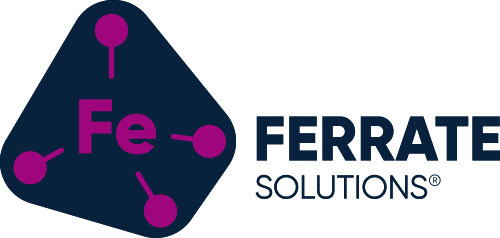Are Perfluoroalkyl and Polyfluoroalkyl Substances (PFAS) in Water Difficult to Remove?
Not for High Valence Iron (Ferrate).
– Dr. Tom Waite, Founder, Ferrate Solutions® Inc
Perfluorinated compounds (PFAS) are chemicals consisting of a carbon structure attached to fluorine molecules. These compounds have been used in industry for many years because they are non-acutely toxic, highly stable, and fire resistant, among other things. While not produced any more in the USA, these chemicals remain present in our environment, and can accumulate in biological systems. Studies are showing that there are significant health effects associated with the bioaccumulation of PFAS in humans.
Because of the strong carbon–fluorine bonds of these substances, they are extremely resistant to degradation by physical, chemical and biological processes. In short, they are nearly impossible to get rid of.
Initial treatment, or removal, studies focused on the use of free radicals (.OH), which are known to be the most powerful oxidants available to treat water and wastewater. However, research has shown that these radicals are not effective in destroying PFAS. Several other unique biological and chemical systems have been explored for treatment, but these systems are not readily available at a commercial scale and are extremely expensive.
So we have a big problem. In order to deal with the widespread presence of PFAS in our water and wastewater systems, treatment will need to be incorporated at many levels in the environment. The best solution would be to use a treatment process that not only works at different locations (for example, both drinking water and wastewater treatment facilities) but can also remove or treat several environmental contaminants at the same time. No other approach will ever be cost-effective.
Ferrate can perform this function.
With Ferrate incorporated into drinking water treatment operations, the product is a clear, bacteria-free glass of water that is also free of toxic compounds such as PFAS.
Similarly, wastewater treatment systems must be able to remove these compounds from the effluent while also disinfecting it and making it available for selected reuse options.
Ferrate’s real value lies in its ability to provide multiple levels of treatment with only one chemical addition. And remember, Ferrate does not stay in the final product as it reacts and is removed from water in its closed-system application.
Ferrate facilitates oxidation, disinfection and coagulation with one unit process. Thousands of publications, including an in-depth evaluation by the USEPA, have demonstrated the effectiveness of this new technology. Ferrates have been shown to oxidize difficult to remove contaminants such as endocrine disruptors, and personal care products, radionuclides, nutrients like phosphorus and nitrogen, pesticides, and now most recently, PFAS .
For those of you who want to know “how”, it’s because ferrates are powerful oxidants and effective coagulants, so recalcitrant materials like PFAS are removed from solution both by oxidative destruction, and absorption onto the unique ferric hydroxide precipitate.
A complete life-cycle evaluation by the USEPA of replacing chlorine with ferrate has been made for both water and wastewater treatment. In every category ferrate is superior. Now add effective removal of PFAS.
Citation: Environ Chem Lett (2014) 12:413–417 DOI 10.1007/s10311-014-0463-5
High-valent iron-based oxidants to treat perfluorooctanesulfonate and perfluorooctanoic acid in water
Brian J. Yates • Ramona Darlington • Radek Zboril • Virender K. Sharma

0 Comments